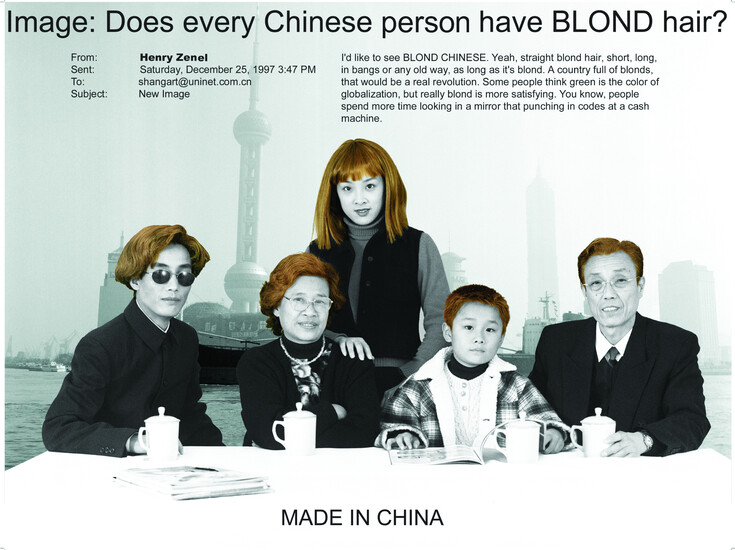
The visit to M50 to visit Xu Zhen and Shi Yong's studios was of course, a welcome privilege. However, I wish that we could actually see their works before going to talk to them. It seems that all the research I do on these artists is post-visit, which I think is unfortunate since it is much more difficult to contextualize these artists after I hear their words. I like connecting these artists to his or her work, and without a proper introduction, their words float around in a cloud of abstraction that eventually disappear without the aid of context (such as knowing the artist's biography or seeing the artist's works). I digress, but I still think this is a valid point that needs to be raised in order for us to make the most of our precious time with these artists.
That being said, I still enjoyed the visit. Xu and Shi's words concerning their own artistic upbringings and their takes on the current landscape of contemporary art in China were immensely valuable, especially Xu when he talked about how he and his friends started basically from scratch, exhibiting in almost-impromptu gatherings at their apartments.
However, after doing post-visit research on these two artists, I really found Shi Yong's work to be striking, especially, the works from 2000 entitled "Yearning", which I speculate came as a result of his photo the previous year entitled "Does Every Chinese Person Have BLOND Hair?". The aforementioned work and the works in the "Yearning" collection are family portraits depicting a typical Chinese family (a set of grandparents, parents, and one child--a boy), however, despite this seeming ordinariness of it all, the family members all have headfuls of strawberry blonde hair. It echoes this perpetually recurring theme of how China looks towards the West: for industry, culture, and in the context of art (and the particular family in this piece), for aesthetics. The historical contexts of Western influences upon China have trickled down to the foundations of Chinese society: the family. Yong's comment upon Chinese families finds itself at an axis that is at the explicit convergence of Western influence upon China and the current trend towards globalization. However, underlying the creepily saccharine semblance of familial bliss comes a damnation upon the Western influences and the forces of globalization. What Yong seems to be arguing is that the picture is actually a facade where hopes and and ambitions are nothing more than an attempt to normalize everyone to a Western standard (in this case, the blonde hair as a standard of beauty).
[Photo from Shanghart]
No comments:
Post a Comment